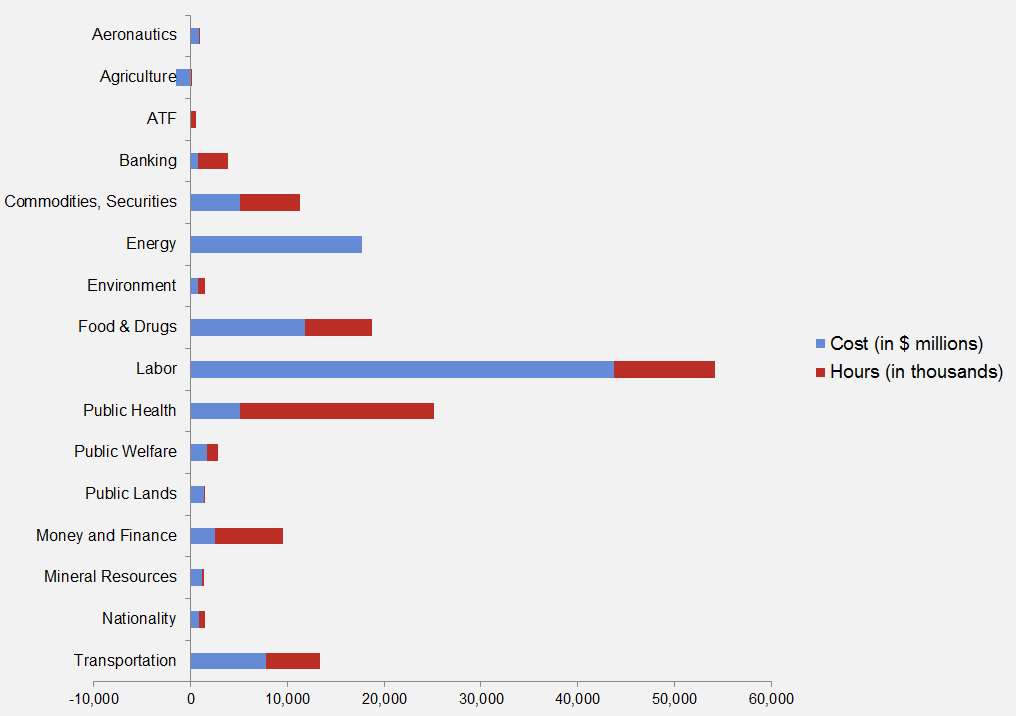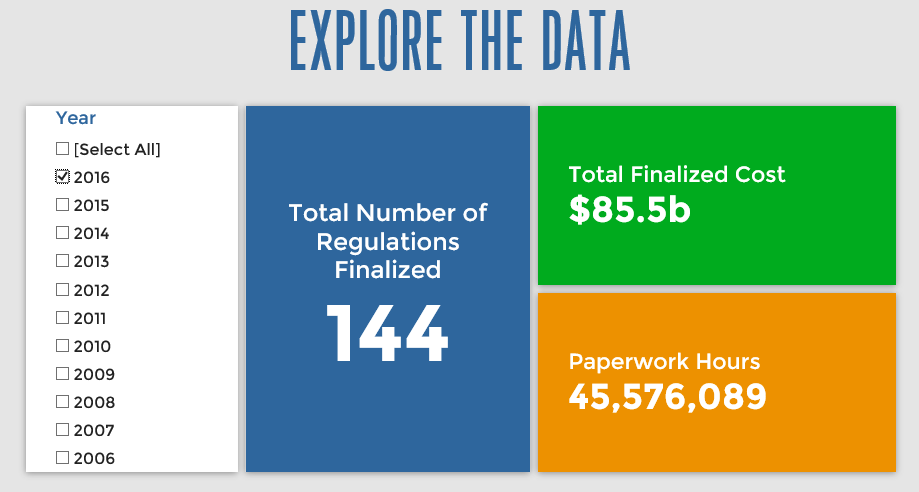Week in Regulation
May 30, 2016
Passing $100 Billion in Regulatory Costs
Two weeks ago: $6 billion in costs; last week, another $3.6 billion in burdens. This week, regulators didn’t flinch, adding $12.8 billion in costs. For the mathematically inclined, that’s more than $22 billion in burdens in less than one month. That this spike in activity is occurring around “Regulation Day” shouldn’t surprise anyone. On the year, the federal government has imposed more than $102 billion in costs, easily putting the nation on track for $200 billion in costs during the president’s last year in office. Annualized costs were $1 billion, compared to $2.4 billion in monetized benefits; paperwork grew by more than 11.9 million hours. The per capita regulatory burden for 2016 is $317.
Regulatory Toplines
- New Proposed Rules: 45
- New Final Rules: 70
- 2016 Total Pages of Regulation: 34,240
- 2016 Final Rules: $85.45 Billion
- 2016 Proposed Rules: $17.12 Billion
The American Action Forum (AAF) has catalogued regulations according to their codification in the Code of Federal Regulations (CFR). The CFR is organized into 50 titles, with each title corresponding to an industry or part of government. This snapshot will help to determine which sectors of the economy receive the highest number of regulatory actions.
The top two regulations will be readily apparent to every consumer once they are effective in 2018: revised nutrition labeling. The rules provide more accurate and up-to-date information on serving sizes, reflecting the actual amount people consume in a sitting. In addition, the rules will add new requirements on “added sugar” in foods and makes the overall “Nutrition Facts Label” more prominent on packaging. Combined, the measures will impose $8.6 billion in costs, with $400 million in annual burdens, and $2.1 billion in benefits.
The administration also formally published its Overtime rule this week, just a few days after its unofficial release. AAF reviewed the final rule here, noting that the measure generally just contains transfers from employers to employees and roughly $3 billion in regulatory costs. No new money will be created by the regulation and only 825,000 employees could benefit from increased overtime pay. The rule also contains a maddening 2.5 million paperwork burden hours.
The Food and Drug Administration finalized a rule to prevent intentional food adulteration. As part of the Food Safety Modernization Act, companies will be required to conduct a vulnerability assessment to identify possible adulteration. The measure didn’t monetize benefits, but does estimate $119 million in costs to domestic manufacturers, along with 2.5 million paperwork hours.
Affordable Care Act
Since passage, based on total lifetime costs of the regulations, the Affordable Care Act has imposed costs of $48.5 billion in final state and private-sector burdens and 171.4 million annual paperwork hours.
Dodd-Frank
The Consumer Financial Protection Bureau (CFPB) proposed to limit certain pre-dispute arbitration agreements in consumer financial products and services. The measure would cost roughly $76 million annually, and in a rare occasion, CFPB calculated the benefits at $342 million; paperwork is minimal, at just 500 hours.
Click here to view the total estimated revised costs from Dodd-Frank; since passage, the legislation has produced more than 73.9 million final paperwork burden hours and imposed $36.2 billion in direct compliance costs.
Total Burdens
Since January 1, the federal government has published $102.5 billion in compliance costs ($85.45 billion in final rules) and has imposed 64.5 million in net paperwork burden hours (45.5 million from final rules). Click below for the latest Reg Rodeo findings.












